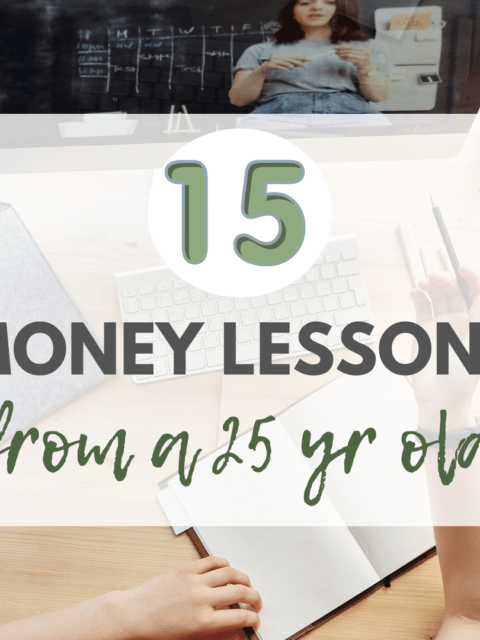
There are important things you need to do before you start investing. Investing is cool and all, but without clear goals or preparations, it might be a recipe for disaster.
When you start investing early, for example in your 20s, you are making a very smart decision in setting up your future. Nevertheless, investing at a later time is not the end of the world, but you get less time to build wealth.
Related Content:
Part I – Pre-investing checklist
This section is the preliminary stage on things to do before investing.
1. Track Your Expenses
Budgeting makes life so much easier! It tells you where your money is going and how much is coming in. I used to do mental budgeting and wouldn’t make a visual budget because I thought it was not important.
Trust me it is important and opens your eyes to see how much you spend on certain things. I use a mixture of apps and an Excel spreadsheet.
Related Content:
Now, it is one thing to create a budget, it is another thing to stick to it. If you create a budget and don’t monitor what’s going on, then it is pointless. To help me stay on budget and follow it, my apps tell me when I’m over the budget. Automating your savings and investments helps you manage things better.
Bottom line, having a budget allows you to give your money a job: how much is for expenses and how much can I put for savings or how much can I invest?
2. Build 3-6 months of emergency funds
An emergency fund is an amount allocated for surprises that may happen such as medical bills, car repairs, and home repairs. The majority of money experts recommend saving 3-6 months of your monthly expenses. I understand everyone’s situation is different so you want to make sure you do what’s best for you.
You might ask, so how much should I save? For example, let’s assume fixed expenses such as rent and bills make up for $1,000 a month and variable expenses such as restaurants and shopping are $300 a month, the total monthly expenses are $1,300. To calculate the total amount to save, multiply $1,300 x 3 months and you get $3,900.
In the event of an emergency, you know you are covered for at least 3 months until you recover. To help break the $3,900, you can divide it by 12 months or however, time you want to save it up. So to save $3,900 in 12 months you need to put away $325 per month into a high-yield savings account.
Putting it in a high-yield savings account allows your money to earn interest, be protected, and be readily available to use. I use Marcus by Goldman Sachs online account for my emergency fund and sinking fund.
–> Apply online here and use my referral code to get an extra % interest!
3. Pay off high-interest debt
Debt sucks! I’m talking about debt such as student loans, car loans, personal loans, or credit card debt. If you’re not leveraging debt (mortgage/rental property) to build assets, then pay it off.
Create a debt-pay-off plan so you don’t get overwhelmed or burned out. There are different debt-pay-off methods – debt snowball and debt avalanche. Snowball is tackling the smallest balance first and working your way down to the highest balance last.
Using debt avalanche, you focus on the debt with the highest interest rate first and pay off the smallest interest rate last. I say go for the debt that’s bothering you the most and what makes sense with your financial situation.
Quick Note: I’m a big believer in investing while paying down debt. It depends on the type of debt, financial situation, education on investing, and so on.
Here are resources to help you:
- Unbury me – I love this loan calculator because it’s easy to use and aesthetically pleasing to the eyes
- Undebt it – Debt snowball calculator that generates an easy-to-follow payment plan
- Calculator.net – The calculator below estimates the amount of time required to pay back one or more debts. Additionally, it gives users the most cost-efficient payoff sequence, with the option of adding extra payments
4. Invest in yourself
I cannot stress how important it is to invest in yourself. Investing in yourself means being intentional about learning something new that will be beneficial to your growth! This could be traveling to experience new things, reading books, or improving your skills. There are tons of resources out there to help you in whatever areas you need the most growth in.
The best investment to make is in yourself because no one can take that knowledge away.
5. Establish your goals
SMART goals are so important to have because it keeps you accountable and motivated. Why do you want to invest? How long do you plan to invest? How much money can you invest? What do you want to invest in? You can use these questions as a guide to creating your investment and money goals.
How to create a SMART goal:
- Specific – I want to pay off a total of $20k in credit card debt
- Measurable – I will use the debt-pay-off calculator and tracker to break down how much I need to pay
- Attainable – Is this within my scope? Do I have the money to pay down my debt? Yes I do
- Relevant – Is it a priority to focus on? Yes it is because it could slow my wealth-building journey down
- Time-bound – I want to pay it off in 14 months
Part II – Investing phase
This section prepares you for your investment journey after getting the basics out of the way.
6. Research company
When you invest (buy a share of stock) in a company, you own a piece of that company. This means you believe in the company and agree with its business model. Knowing a company’s business objective and reviewing its financial health makes you a great investor because you understand what you’re investing in.
The best site to learn about the fundamentals of a company is yahoo finance.
7. Understand your risk tolerance
Investing comes with risk whether you like it or not. HOWEVER, that shouldn’t be the reason for not investing! Risk tolerance is your ability to lose a certain amount of your investment in exchange for potentially greater returns – it’s all about risk and reward.
For example, my risk tolerance is high so I’m aggressive with my investments because I am still young and have time to weather the market cycles.
Think about these questions:
- What’s your time horizon?
- What’s your asset allocation?
- Are there fees to invest?
- Do you want to do DIY investment or hands-off investing?
8. Open a brokerage account
A brokerage account is an investment account where you can buy and sell a variety of investments, such as stocks, bonds, mutual funds, and ETFs. There are different types of investment accounts for different purposes – retirement accounts, educational accounts, or health savings account.
>> 5 Best Accounts You Must Have to Build Wealth
Before you can open an investment account, you need to pick a brokerage firm. A brokerage firm is a company that manages your investment accounts. The top three firms I recommend are Fidelity, Vanguard, and Charles Schwab.
Related Content:
- How to Start Investing in the Stock Market
- 5 Reasons to Start Investing Early
- My recommended investment apps
9. Select investment funds
What the heck should I invest in? Most financial experts recommend beginner investors to invest in index funds or ETFs. Picking individual stocks can be confusing and overwhelming if you’re just starting to invest.
You can just pick an S&P 500 index fund or total stock market index fund and you’re good. To diversify, you can add international stocks or bonds depending on your age and risk tolerance.
10. Keep investing
Please don’t stop investing!! Even if it’s just $50 every month, it still goes a long way. Being consistent will pay off in the years to come. Remember that we’re in this for the long run, so be prepared to ride the wave no matter the market condition.
Final Thoughts
Don’t let analysis paralysis stop you from building wealth. Create a plan, follow it, and you can sit back and relax and enjoy! Personal finance is a learning journey so take it one step and a time and have fun along the way.
If you enjoyed this content, please comment, share, pin, and tweet!



